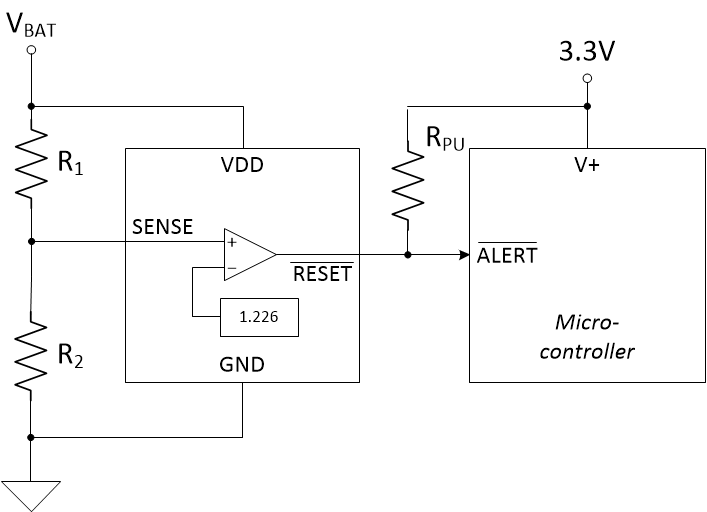SLVSFL9 March 2020 TLV4011
PRODUCTION DATA.
- 1 Features
- 2 Applications
- 3 Description
- 4 Revision History
- 5 Pin Configuration and Functions
- 6 Specifications
- 7 Detailed Description
- 8 Application and Implementation
- 9 Power Supply Recommendations
- 10Layout
- 11Device and Documentation Support
- 12Mechanical, Packaging, and Orderable Information
Package Options
Mechanical Data (Package|Pins)
- DCK|5
Thermal pad, mechanical data (Package|Pins)
Orderable Information
8.2.1 Under-Voltage Detection
Under-voltage detection is frequently required in battery-powered, portable electronics to alert the system that a battery voltage has dropped below the usable voltage level. Figure 11 shows a simple under-voltage detection circuit using the TLV4011 which is a non-inverting comparator with an integrated 1.226 V reference and an open-drain output stage. A non-inverting is well suited for this application since the micro-controller requires an active low signal when an undervoltage level occurs.
 Figure 11. Under-Voltage Detection
Figure 11. Under-Voltage Detection